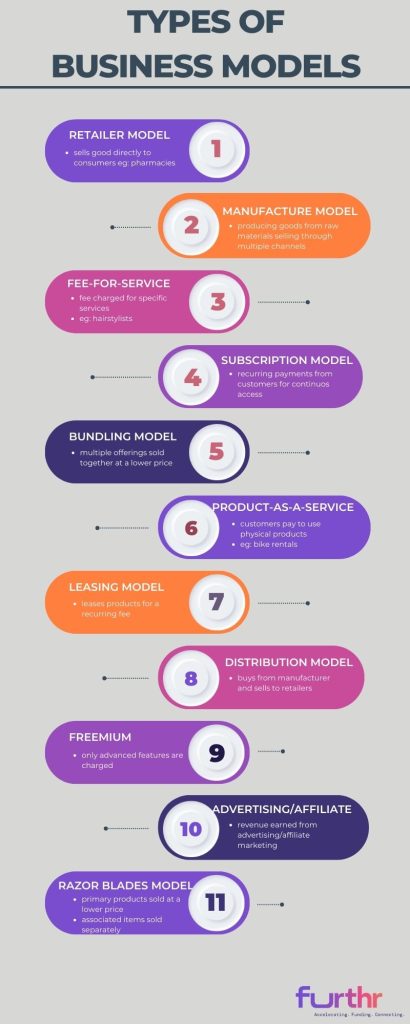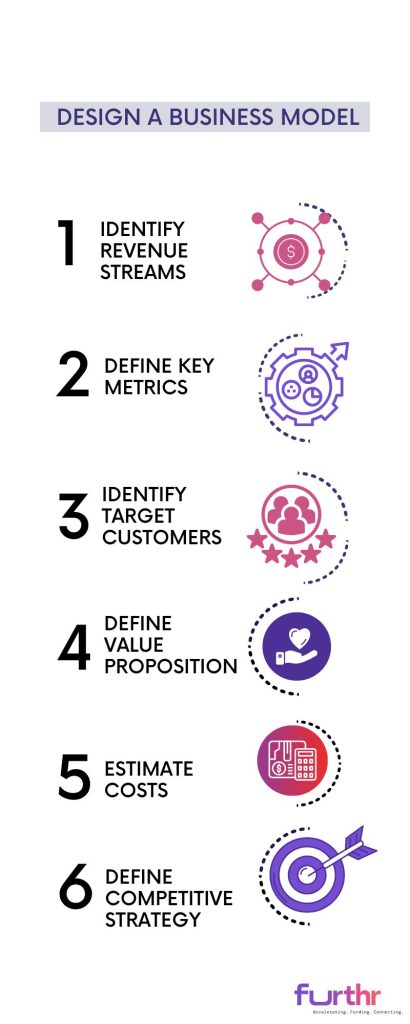In today’s competitive business landscape, the role and importance of a business model is undeniable. It acts as the backbone of any company, defining its modus operandi, revenue generation strategies, and value proposition. It’s a blueprint that outlines how a company will create, deliver, and capture value, serving as a roadmap to success and sustainability.
Why is a Business Model important?
A business model is essentially a strategic design that defines how a company operates, makes money, and achieves its goals. The importance of a business model is manifold. It not only guides a company’s operations but also impacts its performance and long-term viability. Here are some reasons why a business model is crucial:
- Strategic Direction: The business model provides a strategic direction and a framework for decision-making. It outlines how the company will create and deliver value, which helps strategise the operations.
- Revenue Generation: The business model outlines how a company plans to make money. It identifies the revenue streams and mechanisms for generating profit.
- Competitive Advantage: A well-designed business model can provide a competitive advantage. It differentiates the company from its competitors and helps in capturing a larger market share.
- Investor Attraction: A robust business model is often a key factor that attracts investors. It demonstrates the company’s potential for generating profit, which can be appealing to investors.
- Sustainability: A sustainable business model ensures the company’s longevity. It helps the company adapt to changing market conditions and customer preferences.
When start-ups are looking to get funded by investors, a solid business model instantly makes a start-up investor ready. There are support systems, such as Furthr and our comprehensive range of supports, which start-ups can engage with to perfect their business plans that will stand up to scrutiny.
Types of Business Models
Through the years, various types of business models have emerged, each catering to specific business needs and market conditions. Some of the most common types include:

- Retailer Model: This model involves selling goods directly to consumers. It’s commonly used by grocery stores, pharmacies, and other physical stores.
- Manufacturer Model: This model involves producing goods from raw materials and selling them to distributors, retailers, or directly to consumers.
- Fee-for-service Model: In this model, a company charges a fee for a specific service. It’s commonly used by professionals like hairstylists, accountants, and real estate agents.
- Subscription Model: In a subscription model, customers make recurring payments for continuous access to a product or service. Examples include software service providers and magazine publishers.
- Bundling Model: Under this model, a company sells multiple products or services together at a lower price than if they were sold separately. This model is often used by telecom and cable TV service providers.
- Product-as-a-Service Model: Here, customers pay to use a physical product. Examples include bike rental companies and software-as-a-service providers.
- Leasing Model: In this model, a company leases its products to another company for a recurring fee. It’s commonly used for leasing big-ticket items like manufacturing and medical equipment.
- Distribution Model: A distributor buys products from a manufacturer and sells them to retailers at a higher price.
- Freemium Model: In a freemium model, parts of a product or service are provided for free, but customers must pay for access to advanced features. It’s commonly used by software service providers.
- Advertising or Affiliate Marketing Model: In this model, a business earns revenue from advertising or affiliate marketing.
- Razor Blades Model: This model involves selling a primary product at a low price and generating most of the profit from associated items that are sold separately.
Designing a Business Model
Designing a business model requires a deep understanding of the company’s goals, market dynamics, and customer needs. Here are the steps to design a business model:
- Identify Revenue Streams: Identify how your company will generate revenue. This could be through direct sales, subscription fees, advertising revenue, or any other means.
- Define Key Metrics: Identify the key metrics that will measure your company’s success. This could include customer acquisition cost, customer lifetime value, churn rate, and so on.
- Identify Target Customers: Define your target customers and understand their needs and preferences. This will help you create a value proposition that resonates with them.
- Define Value Proposition: Your value proposition is what makes your company unique and attractive to customers. It should clearly communicate the unique benefits that customers can expect from your product or service.
- Estimate Costs: Identify all the costs associated with running your business. This includes fixed costs like rent and salaries, as well as variable costs like raw materials and marketing expenses.
- Define Competitive Strategy: Identify how your company will differentiate itself from competitors. This could involve unique product features, superior customer service, lower prices, or any other competitive advantage.
Remember, a business model is not a one-size-fits-all concept. It needs to be tailored to fit the unique needs and goals of your company. As the business environment changes, the business model may also need to be adjusted to stay competitive and relevant.

Conclusion
In conclusion, a business model is a crucial aspect of any business. It provides a strategic direction, outlines revenue generation strategies, and defines the value proposition. By understanding the different types of business models and how to design one, companies can create a robust and sustainable business model that can help them achieve their business goals and maximise shareholder value.
Often, founders find themselves immersed in their work and fail to notice what works and what doesn’t. It is during these phases that organisations like Furthr can step in to help them take a step back and look at their ideas and models from a wider perspective to understand their strengths and weaknesses. The business consultants at Furthr complement and guide founders’ efforts by pointing them in the right direction, helping them achieve their full potential.
Want to know what business model suits your business? Talk to us at hello@furthr.ie .



